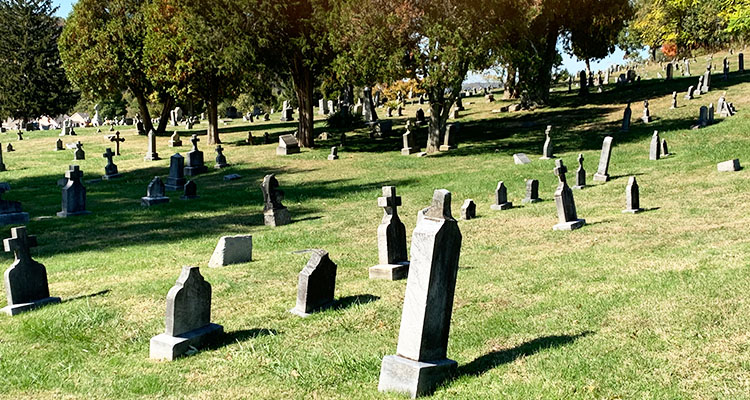THE BACKSTORY
The valley has been hit hard with heartache this year as long-standing area institutions closed or changed significantly.
In March, we learned that there would no longer be a “Jesuit” in Wheeling University. Word came in late summer of the impending closings of Ohio Valley Medical Center and East Ohio Regional Hospital. Hundreds of employees lost their jobs, and OVMC was shuttered earlier than expected.
As much as these events have shaken the community, they do not define the community. Wheeling residents and businesses are still coming together as the dust settles to do what they can — even going above and beyond — to help the community heal.
One such “above-and-beyond” act begins with Jim Stultz.
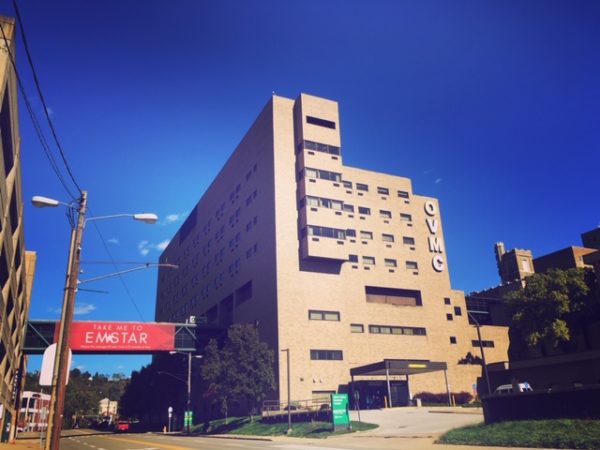
REVISITING A DISCOVERY
A few weeks ago, Stultz had a thought that put into motion an interesting chain of events. Stultz had worked at OVMC for 41 years, retiring in 2011 as the senior vice president of human resources. During his time at the hospital, he became aware of some of the archives from the School of Nursing — the very first nursing school in West Virginia. It was part of the original OVMC building.
Before he retired in 2011, he and the hospital’s director of pastoral care made a discovery. When the hospital’s School of Nursing closed, many of the supplies and artifacts used for the school were placed into a storage room inside the hospital — including a box of human skeletal remains.
It was clear these bones were used in a professional manner — they were shellacked, with their Latin names neatly written on them.
“There is a complete skeleton, which was probably an adolescent from the size of the skull and the structure of the bones,” Stultz explained. It is thought that the skeleton — possibly dating back to when the School of Nursing opened in 1892 — may have belonged to a girl around the age of 14.
In 2011, Stultz and the pastoral care director knew they wanted to do something with the remains so they would not be forgotten, but Stultz retired before they had a chance to act on their plan. When the news broke that OVMC would be closing earlier than had been expected, it occurred to Stultz that the skeleton might still be in the hospital, and something needed to be done before the doors were shut completely. Respect needed to be paid to this young girl and paid correctly.
DOING RIGHT BY THESE BONES
Stultz went to local historian Margaret Brennan for help in his journey to honor the remains. Brennan speculates the skeleton could have been anyone — someone from an asylum, an orphan or even a body that was donated to science, or simply someone whose family couldn’t afford a burial.
“How do you get a skeleton? Today you couldn’t. She could have been an indigent person, maybe no parents, maybe donated to a medical facility, and then her bones ended up, perhaps, in a catalog,” Brennan said. “Apparently, there were medical catalogs for that purpose. The Latin written on the bones looks professional, but this goes back years and years and years.”
“We just want to do right by this little girl,” Brennan added.
And it was with that attitude of doing right that had Brennan calling Eugene Fahey, vice president and general manager at Altmeyer Funeral Homes in Wheeling, to see what could be done with the remains.
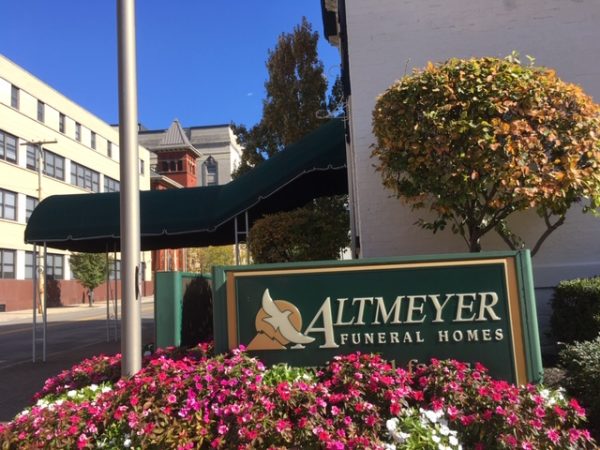
“This is the situation. Could you possibly take care of cremating these remains?” Brennan said to Fahey.
“And I told him it could just be basic because we don’t have the funds. But he said, ‘Oh no, we’ll do it up right.”’
Fahey didn’t even hesitate when he was asked to help, and explained, “The way we see it is, this was a person whose remains were used to help other people. At the end of the day, our jobs are to make sure that the end of a life is handled with dignity.”
Altmeyer has already cremated the remains — with permission from the State Medical Examiner — and has placed them in an urn. Stultz sees Eugene’s extra step of giving the ashes an appropriate urn as “the good people of Altmeyer’s just doing a kindness to the fact that this was a living human being who needs to be treated respectfully.”
The next step was to decide what would be done with the ashes. Stultz and Brennan asked Deacon Douglas Breiding, director of the Mount Calvary Cemetery, if they could properly bury the ashes in the cemetery.
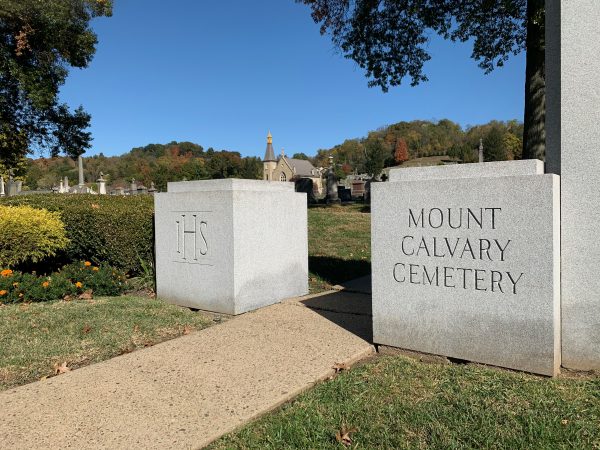 Not only did Breiding agree, he told them he would hold an appropriate internment service as well. At Mount Calvary Cemetery, there is a dedicated area within the cemetery for just this sort of situation — an area where indigent youth can be buried at no cost, which is a practice that is more common than the general public might think.
Not only did Breiding agree, he told them he would hold an appropriate internment service as well. At Mount Calvary Cemetery, there is a dedicated area within the cemetery for just this sort of situation — an area where indigent youth can be buried at no cost, which is a practice that is more common than the general public might think.
Breiding let Stultz and Brennan know that he and the cemetery “will do right by this little girl.” An appropriate monument will be placed on the site of burial as well.
ADDRESSING ARTIFACTS
Just as Stultz felt he had a need and a duty to honor the remains he saw years ago, the Alumni Association of OVMC was simultaneously doing all it could to preserve the artifacts stored in the hospital.
Mary McKinley, who was first a student and then an employee of OVMC for a total of 46 years, was very concerned about what would happen to the history of the School of Nursing. McKinley and three other alumni were desperately trying to find a place to store artifacts from the school before the hospital closed. Original school uniforms, photographs of students, record books, meeting notes — all of this needed to go somewhere where McKinley knew it would be safe and preserved.
The former Ohio Valley General Hospital School of Nursing had an estimated 4,000 to 5,000 students who walked through the school doors in Wheeling, and McKinley was one of them.
As for the skeletal remains, she remembers them well. “We had used them in our anatomy classes. I learned the names and bones of the body with that skeleton,” as had countless other students. McKinley had many titles while at OVMC, including staff nurse, charge nurse and head nurse; she retired in 2017 as the director of education.
While she was busy working on finding a place for the hospital’s historical artifacts after the impending closure was announced, Stultz approached her about the skeletal remains. And in the end, both parties’ wishes for preservation were granted. McKinley was overjoyed when she connected with Erin Rothenbuehler, Sean Duffy and Laura Carroll at the Ohio County Public Library, and they agreed that the library would take on the artifacts from OVMC before it closed.
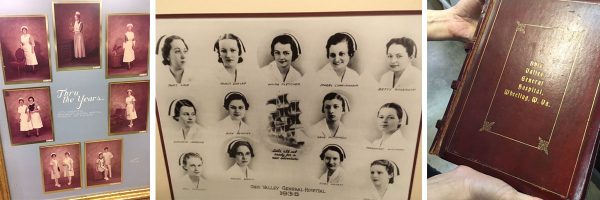
Rothenbuehler explained they “made several trips from the hospital to the library” with boxes of artifacts, and someday the library will have them all properly archived for the public to see and use.
“In my opinion, Erin at the Ohio County [Public] Library is a hero,” McKinley said. The library now houses in their basement every class photo of the graduating nurses that once hung on the wall of OVMC; yearbooks; board meeting notes from 1914-2019; paintings of doctors; original nursing uniforms; a Civil War-era surgical kit, and the list goes on.
McKinley and the library are attempting to contact family members of doctors and nursing students to see if they want the photographs of their family members.
A lot of these artifacts and archival items will be on display on Jan. 7 when the library hosts a special Lunch With Books dedicated to OVMC. Duffy, adult programming director and history specialist at the library, explained that the event “will be a memory-sharing program for both the nursing school and the hospital, in general, for anyone who wants to come and share a memory, either as an employee of the hospital or someone who just remembers it fondly because they were treated there.”
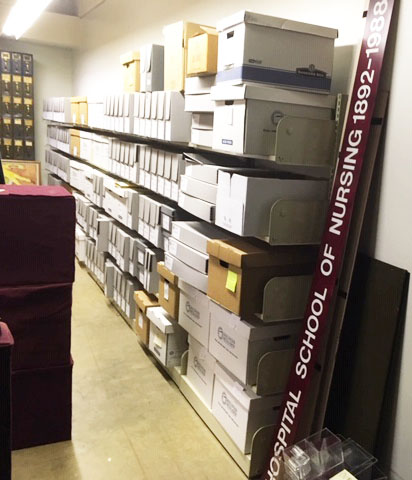
LAYING HER TO REST
The service for the remains of the young girl who helped teach so many nursing students has not yet been determined, but it is expected to take place soon.
“The way I look at this is it’s ironic,” Stultz explained. “Here it is that from the time the school of nursing opened up, we had this skeleton that was a part of the organization of the OVGH affiliation, and it stayed on that campus and actually had a home there, if you will. So now we get all the way to the closing with the demise of OVMC, and those bones will now be properly interred and have the kind of farewell they should have.”
OVMC’s alumni association will be informed of when the service will take place, and members will be welcome to attend, as will anyone who wants to be a part of history.
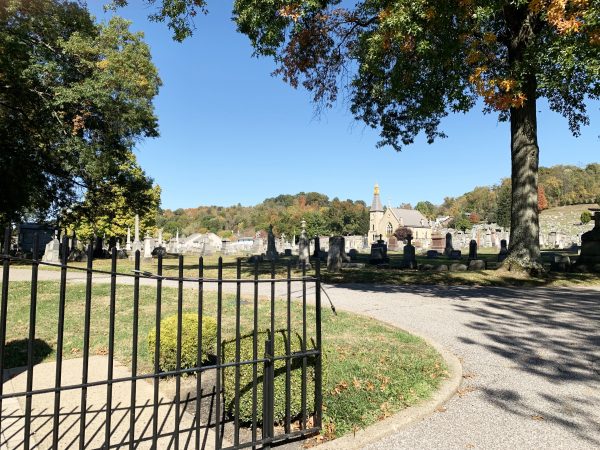
The closing of OVMC will have effects on the valley that have yet to be felt. The people who came together to save the hospital’s artifacts and to make sure the skeletal remains are properly put to rest are a testament to how strong the people of Wheeling can be. Saving the remains is just a piece of the bigger picture of the closing of OVMC, but getting a glimpse behind the scenes of the true community of Wheeling working together to honor and preserve its own history gives hope for the future.
• Kelly Strautmann lives out in the country of Cameron, West Virginia, and proofreads in the city of Wheeling. She has a supportive and talented husband and two ridiculous daughters who keep her busy and full of love.


